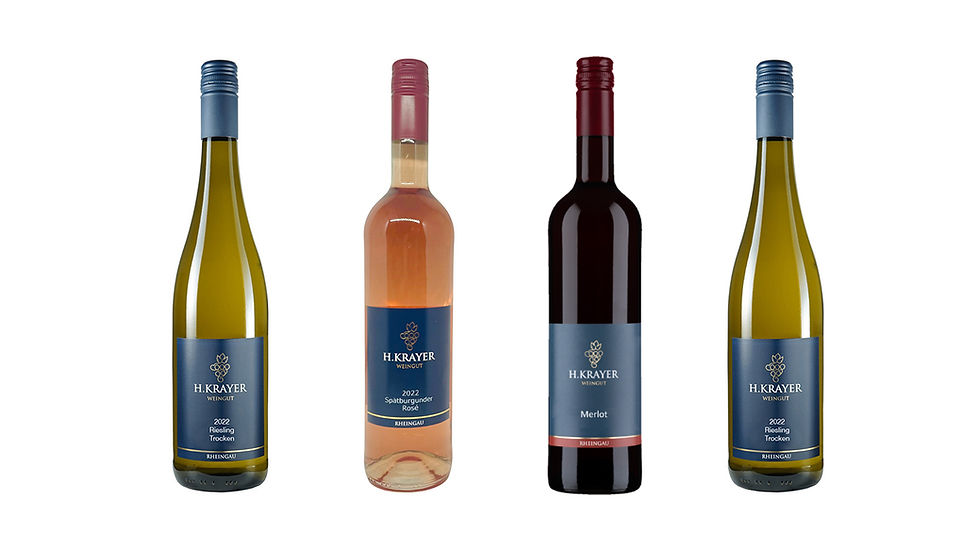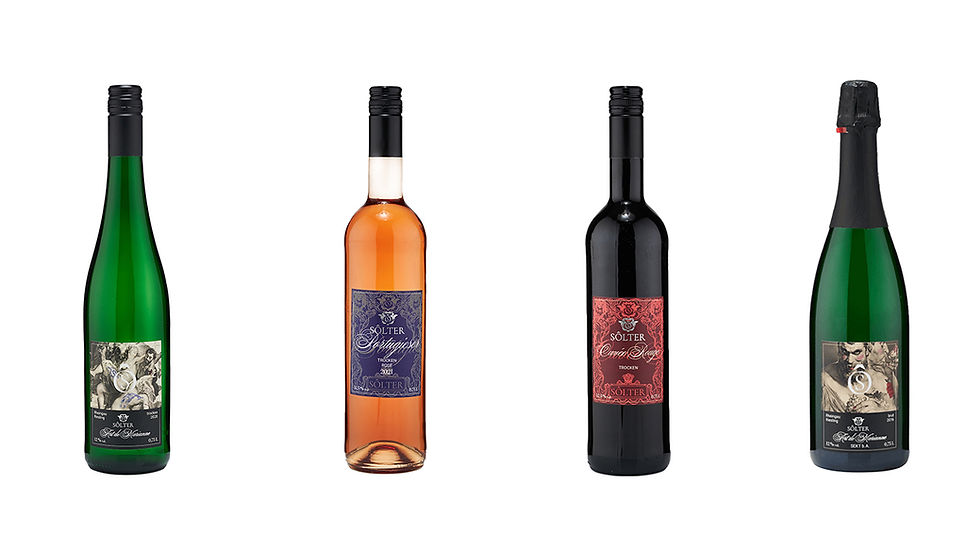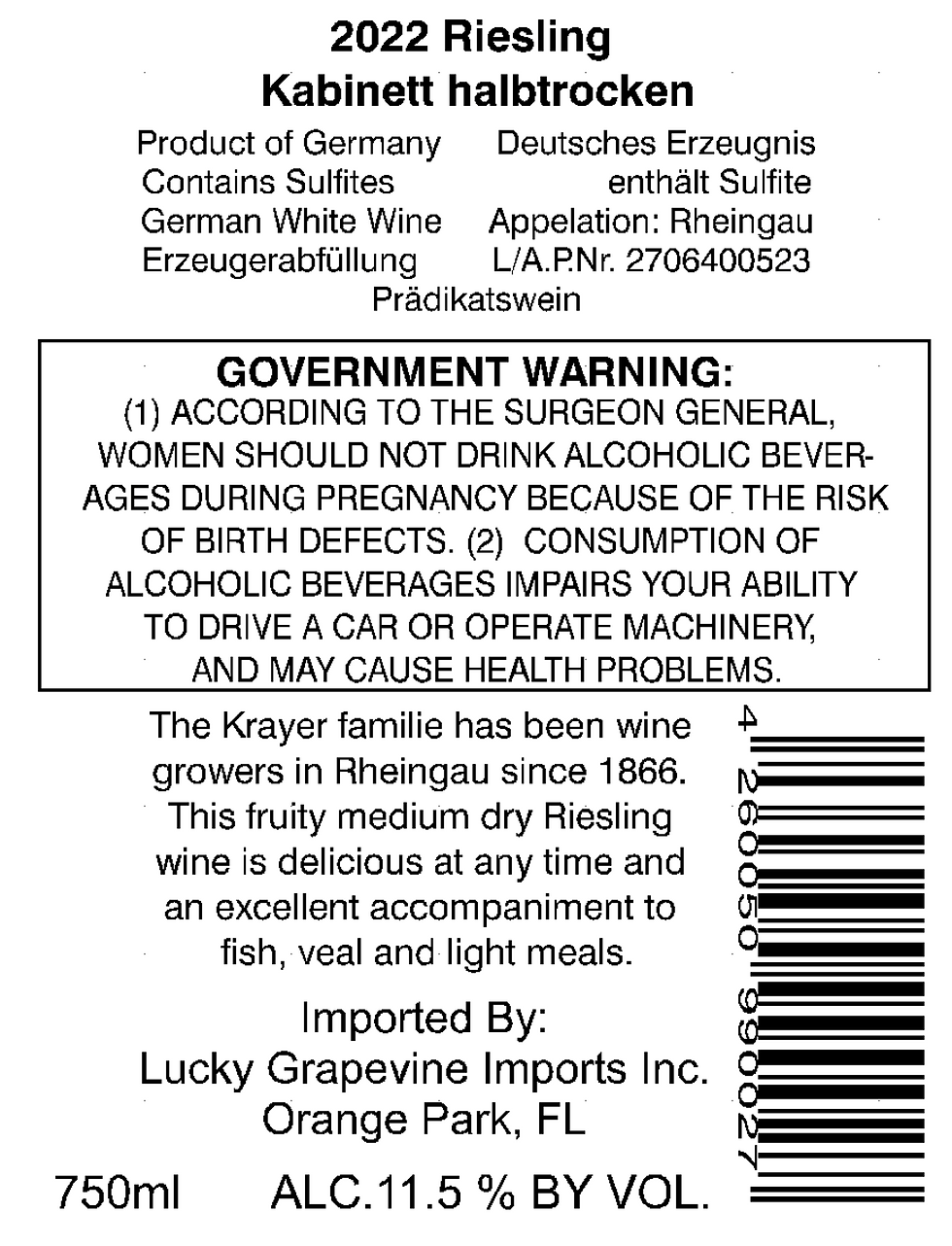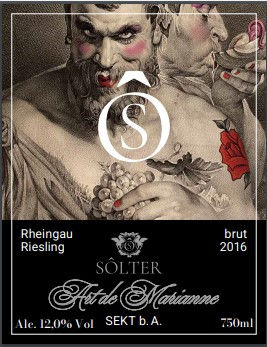

Everyone who drinks wine has likely purchased a bottle due to a pretty label. Face it, you can't test before you buy in most cases and it's highly frowned upon in most establishments. It is my goal to change the way wine lovers in the United States view German wines. This year will be the German Wine Comeback, if it kills me!! If I knew then what I know now, I would have been drinking German wines so many years before I did. However, it took me moving to that beautiful country to actually understand. So, in this blog, I will share in a basic way what to look for in a German wine so that it will meet your liking. Let's go!
What's in a name? German Wine Labels revealed:
On the front of the bottle for consumers, often times a cool picture sets the intrigue and then a lot of mumbo jumbo. So, let's begin by who made it. The brand name or producer name is often featured boldly on the front. This will bring some familiarity for buyers in the future or maybe it's a popular one already seen. This should never be the only reason to buy a wine. Be assured there are a lot of well known brands that you and I have both likely tried that weren't so good! Then move past this to the name of the wine. In most cases, producers will use the region or the grape variety. Though there are some that will name after a loved one, a vineyard or historic figure. A good place to start is to know a little about grapes.


Grape Variety on German Wine Labels:
There are over 135 grape varieties in Germany! I could... but won't tell you all of them. Basic knowledge of different varietals is one of the most important factors what the wine will taste like. Each grape has it's own character that contributes to the wine. In fact, you likely buy wine because you like them because of the grape type. For example, if you are looking for a white, crisp, herbaceous wine with floral aromas, you may pick a Sauvignon Blanc. Or maybe a Gewurztraminer, with it's complex flavors and enjoyable to many palates. How about another common one, Pinot Noir or Merlot. Point being, you pick most wines by the grape already!

Look on the back! There are clues there too!
Germany has a cool growing climate (62 degrees Fahrenheit). This can make it a struggle to achieve a desired grape ripeness. Much of Germany's labeling will reflect the degree of ripeness in the grapes at the time they are harvested, measured in terms of sugar. Let's start with first 3 clues:
Landwein, this is a term for the PGI (Protected Geographical Indication) wine in Germany. They are typically light bodied, dry to off dry in style. They are considered a superior table wine. It is usually however less expensive wine and there 26 regions that are designated to used this term on the label.
Qualitatswein (sometimes QbA) is quality wine grown from one of the 13 specified regions. These wines must achieve a higher level of ripeness than Landwein. The grapes must be 100% from the specified region and bear the official quality control test number. They are typically more intense in taste and fuller bodied.


Pradikatswein is a wine that must meet more stringent quality requirements than the other two before this can appear on the label. There are six categories classified in order of the sugar levels required in the grapes at time of harvest and the grapes must all come from a single region. The first category starts now.
Kabinett: The highest and most delicate category. Mostly light bodied with delicate green fruit and citrus flavors with floral aromas.
Spatlese: It simply means late harvest. This wine will have more concentrated flavor and fuller bodied. Riper citrus and stone fruit flavors.
Auslese: The wines are made from carefully selected extra ripe grapes. These wines have flavors of stone fruits, tropical fruits and dried fruits. Although these wines can be made in a "dry" style, most have sweetness.
Eiswein: Simply put, Ice Wine. These wines are made from grapes that have frozen on the vine. They are vibrant, sweet and fresh. These wines are not made every year as the conditions must be right for them and the yields are very small and can be pricier because of this.
Beerenauslese: Selected berry harvest in other words. These wines are made from berries that have been concentrated by botrytis. Fresh stone fruit, tropical fruit, dried fruit and honey would best describe.
Last but defiantly not least, Trockenbeerenauslese (TBA for short) Selected dried berry harvest. This is a selection of grapes that have been dried through the effect of botrytis. These are rare and concentrated wines that are similar to but more intense than Beerenauslese.
Final words that can make or break your choices!
People who have had German wine and do not enjoy it because it is too sweet, simply got the wrong bottle. If you like a dry wine, look for the word "Trocken" and a off dry wine, but not sweet would say "Halbtrocken". Sweeter wines may also say "Feinherb". One other fun fact is in the ABV. The Alcohol by Volume can, not always, but can tell you that a wine could be sweeter. If you see a wine with 7-9% ABV, you could safely assume that it is sweeter. After all, during the fermentation process when the yeast eats up the sugar to create alcohol. So, less alcohol, more sugar left in juice! In the mood for some bubbles? Choose a "Sekt" or "Secco" for a glass of sparkling wine! I hope that this helps you on your journey for trying new wines! Cheers!

Comments